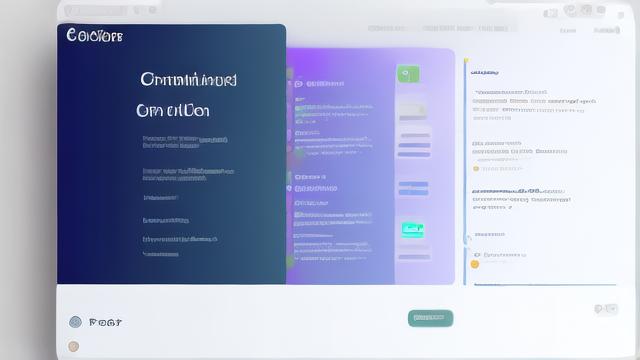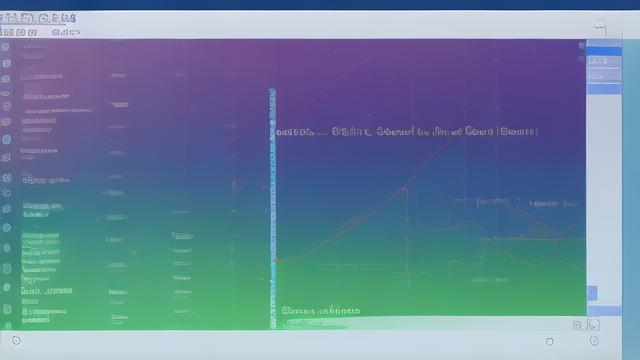CentOS Web服务器搭建教程

一、前言
在现代互联网应用中,Web服务器是不可或缺的重要组成部分,本文将详细介绍如何在CentOS系统上搭建Web服务器,包括安装Apache HTTP服务器、配置防火墙、设置虚拟主机等内容,通过本教程,您将能够搭建一个功能完备的Web服务器环境。
二、基本网络配置和软件安装
安装必要软件包
确保系统已更新所有软件包:
sudo yum update -y
安装Apache HTTP服务器:
sudo yum install httpd -y
启动并设置HTTPD服务开机自启:
sudo systemctl start httpd sudo systemctl enable httpd
检查httpd服务状态
确保服务正常运行:

sudo systemctl status httpd
如果输出显示“active (running)”,说明服务已经成功启动。
关闭防火墙或开放80端口
查看防火墙状态:
sudo firewall-cmd --state
如果防火墙未关闭,执行以下命令关闭防火墙:
sudo systemctl stop firewalld
或者开放80端口:
sudo firewall-cmd --permanent --add-service=http sudo firewall-cmd --reload
三、创建和配置虚拟主机
基于IP地址的虚拟主机配置
编辑主配置文件/etc/httpd/conf/httpd.conf,注释掉默认的配置:
<VirtualHost *:80>
ServerAdmin webmaster@dummy-host.example.com
DocumentRoot "/www/docs/dummy"
ServerName dummy-host.example.com
ErrorLog "logs/dummy-host.example.com-error_log"
CustomLog "logs/dummy-host.example.com-access_log" common
</VirtualHost>创建新的虚拟主机配置文件/etc/httpd/conf.d/vhost_ip.conf:

<VirtualHost *:80>
ServerName 192.168.1.100
DocumentRoot "/var/www/html/site1"
<Directory "/var/www/html/site1">
AllowOverride All
</Directory>
ErrorLog "logs/site1-error_log"
CustomLog "logs/site1-access_log" common
</VirtualHost>
<VirtualHost *:80>
ServerName 192.168.1.101
DocumentRoot "/var/www/html/site2"
<Directory "/var/www/html/site2">
AllowOverride All
</Directory>
ErrorLog "logs/site2-error_log"
CustomLog "logs/site2-access_log" common
</VirtualHost>创建目录并添加测试页面:
sudo mkdir -p /var/www/html/site1 /var/www/html/site2 echo "Welcome to Site 1" | sudo tee /var/www/html/site1/index.html echo "Welcome to Site 2" | sudo tee /var/www/html/site2/index.html
重启HTTPD服务以使配置生效:
sudo systemctl restart httpd
基于域名的虚拟主机配置
编辑/etc/httpd/conf.d/vhost_domain.conf文件:
<VirtualHost *:80>
ServerName www.example.com
DocumentRoot "/var/www/html/domain1"
<Directory "/var/www/html/domain1">
AllowOverride All
</Directory>
ErrorLog "logs/domain1-error_log"
CustomLog "logs/domain1-access_log" common
</VirtualHost>
<VirtualHost *:80>
ServerName www.example.org
DocumentRoot "/var/www/html/domain2"
<Directory "/var/www/html/domain2">
AllowOverride All
</Directory>
ErrorLog "logs/domain2-error_log"
CustomLog "logs/domain2-access_log" common
</VirtualHost>创建目录并添加测试页面:
sudo mkdir -p /var/www/html/domain1 /var/www/html/domain2 echo "Welcome to example.com" | sudo tee /var/www/html/domain1/index.html echo "Welcome to example.org" | sudo tee /var/www/html/domain2/index.html
重启HTTPD服务:
sudo systemctl restart httpd
基于端口的虚拟主机配置
编辑/etc/httpd/conf.d/vhost_port.conf文件:
Listen 8080
Listen 9090
<VirtualHost *:8080>
ServerName www.example.net
DocumentRoot "/var/www/html/port8080"
<Directory "/var/www/html/port8080">
AllowOverride All
</Directory>
ErrorLog "logs/port8080-error_log"
CustomLog "logs/port8080-access_log" common
</VirtualHost>
<VirtualHost *:9090>
ServerName www.example.info
DocumentRoot "/var/www/html/port9090"
<Directory "/var/www/html/port9090">
AllowOverride All
</Directory>
ErrorLog "logs/port9090-error_log"
CustomLog "logs/port9090-access_log" common
</VirtualHost>创建目录并添加测试页面:
sudo mkdir -p /var/www/html/port8080 /var/www/html/port9090 echo "Welcome to example.net on port 8080" | sudo tee /var/www/html/port8080/index.html echo "Welcome to example.info on port 9090" | sudo tee /var/www/html/port9090/index.html
重启HTTPD服务:
sudo systemctl restart httpd
用户个人站点配置
为系统中的用户xxx设置个人主页空间,假设用户名为huangyong:
sudo useradd huangyong sudo passwd huangyong
编辑/etc/httpd/conf.d/userdir.conf文件:
<IfModule mod_userdir.c>
UserDir public_html
</IfModule>为用户的主目录创建public_html目录并添加测试页面:
sudo mkdir -p /home/huangyong/public_html echo "Welcome to Huang Yong's Homepage" | sudo tee /home/huangyong/public_html/index.html
修改文件夹权限:
sudo chown -R huangyong:huangyong /home/huangyong/public_html sudo chmod 705 /home/huangyong/public_html
重启HTTPD服务:
sudo systemctl restart httpd
在浏览器中访问http://192.168.1.2/~huangyong,验证是否成功。
四、安全配置与优化
修改主配置文件以确保安全
编辑/etc/httpd/conf/httpd.conf文件,增加以下内容以提高安全性:
<Directory "/var/www">
AllowOverride None
Require all denied
</Directory>2. 配置SELinux以增强系统安全(可选)
查看当前SELinux状态:
sestatus
如果需要,暂时关闭SELinux:
sudo setenforce 0
永久关闭SELinux(不推荐):
sudo vi /etc/selinux/config 将 SELINUX=enforcing 改为 SELINUX=disabled
重启系统后生效。
五、常见问题及解决方法
问题1:无法访问Web服务器?可能原因及解决方案如下:
防火墙未关闭:确保防火墙已关闭或已开放80端口,使用以下命令关闭防火墙或开放80端口:
sudo systemctl stop firewalld # 停止防火墙服务 sudo firewall-cmd --permanent --add-service=http # 永久开放80端口 sudo firewall-cmd --reload # 重新加载防火墙配置
SELinux限制访问:暂时关闭SELinux进行测试:
sudo setenforce 0 # 暂时关闭SELinux
问题2:如何为网站目录和文件设置正确的权限?权限设置不当可能导致网页无法正常访问或存在安全隐患,以下是一些常见的权限设置示例:
设置网站根目录权限:假设网站根目录为/var/www/html,应设置合适的权限以确保Apache可以访问该目录及其子目录和文件:
sudo chown -R root:apache /var/www/html # 设置拥有者和所属组为root和apache用户组
sudo find /var/www/html -type d -exec chmod 2750 {} \; # 设置目录权限为2750(drwxr-s---)
sudo find /var/www/html -type f -exec chmod 644 {} \; # 设置文件权限为644(-rw-r--r--)设置特定用户目录的权限:对于用户的个人主页空间(如/home/huangyong/public_html),应确保相应用户和Apache用户对其具有适当的读写权限:
sudo chown -R huangyong:apache /home/huangyong/public_html # 设置拥有者和所属组为用户和apache用户组 sudo chmod 755 /home/huangyong/public_html # 设置目录权限为755(drwxr-xr-x)以允许其他用户读取和执行但不允许写入
以上内容就是解答有关“centos web服务器搭建教程”的详细内容了,我相信这篇文章可以为您解决一些疑惑,有任何问题欢迎留言反馈,谢谢阅读。